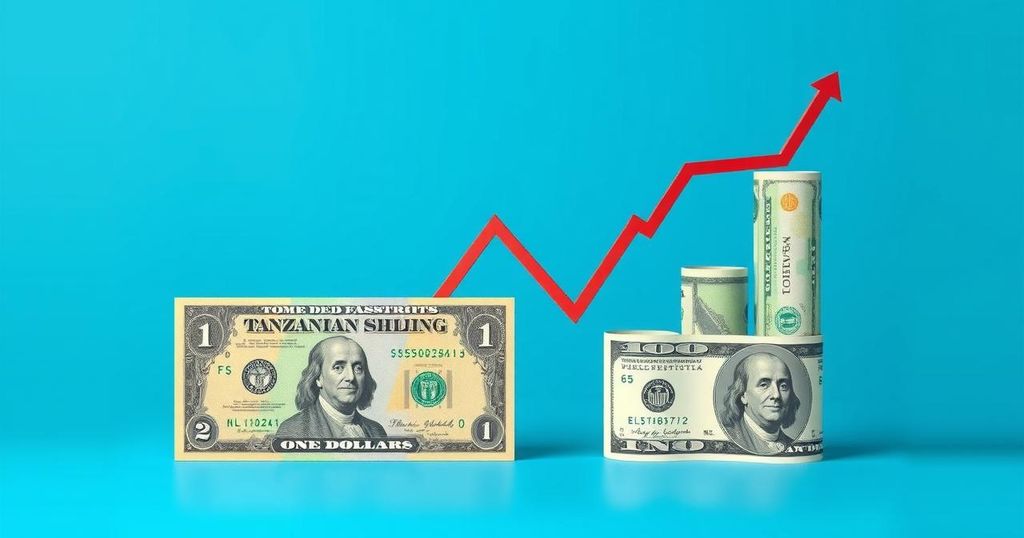The Tanzanian shilling is depreciating against the US dollar after a brief rally in December 2024, attributed to increased import demands and declining exports. The BoT reports a significant decrease in agricultural sales and tourism during the low season, contributing to foreign currency constraints. Analysts anticipate that while current fluctuations may stabilize shortly, ongoing depreciation could result in economic pressures such as inflation.
The Tanzanian shilling, which experienced a notable gain against the US dollar in December 2024, is now witnessing a decline once more. As of October 4, 2024, the Bank of Tanzania (BoT) reported the shilling trading at Sh2,721.68, which improved to Sh2,513.1169 by December 10, 2024. By year-end, the shilling maintained a mean rate of Sh2,394.7558 against the dollar but closed January 2025 at Sh2,486.6387, subsequently falling to Sh2,581.2878 by February 2025 and further to Sh2,611.786 recently.
The depreciation of the shilling can be attributed to several contributing factors, primarily the heightened demand for US dollars stemming from increased imports ahead of religious and cultural events such as Ramadan and the Chinese New Year. BoT Governor Emmanuel Tutuba indicated that rising fuel imports, alongside disruptions caused by recent landslides affecting small-scale mining, are exerting additional economic pressure.
According to Governor Tutuba, the agricultural sector is facing declining sales, reducing the inflow of dollars, while the tourism industry is currently in its low season, constricting the availability of foreign currency. Financial analyst Oscar Mkude remarked that the shilling’s downturn reflects a cyclical trend likely to be short-lived, reinforcing that temporary fluctuations in currency value are expected in such scenarios.
On the other hand, Prof. Dickson Pastory from the College of Business Education highlighted a significant drop in exports, especially in vital sectors like minerals and agriculture, which have traditionally contributed to foreign exchange earnings. This decline combined with rising dollar demand due to imports has created an imbalance in the currency supply.
The combination of decreased exports, limited foreign investments, and reduced remittance volume is tightening the foreign currency supply, exacerbated by the global strengthening of the US dollar. The ongoing depreciation of the shilling may lead to increased fuel import costs, thereby raising transportation costs and triggering inflation within the economy. Christopher Makombe, an independent analyst, pointed out that the shilling’s decline to Sh2,640 against the dollar aligns with historical trends, spurred by businesses restocking after the holiday season and a decrease in foreign exchange inflows from tourism and agriculture.
The Tanzanian shilling has faced a significant depreciation against the US dollar following a period of appreciation. This downturn is influenced by rising demand for imports, declining exports, and increased costs in sectors such as fuel and agriculture. Analysts suggest that while the current trend may be short-term, continued depreciation could lead to broader economic repercussions, including inflation and higher costs for imported goods. Understanding these dynamics is crucial for assessing the future stability of the Tanzanian currency.
Original Source: www.thecitizen.co.tz






